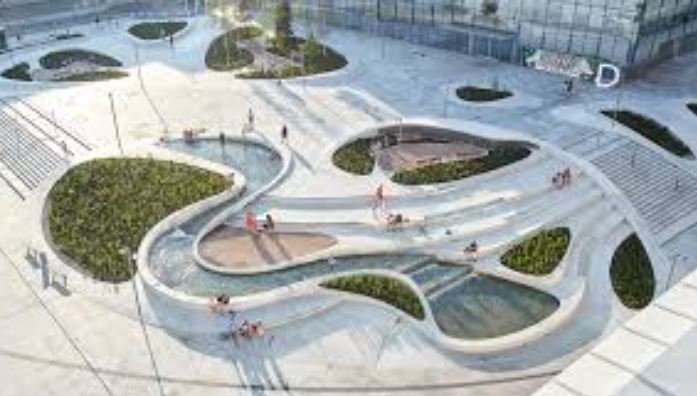Architecture in Urban Design
Urban design is the art and science of shaping cities and towns, focusing on functionality, aesthetics, and the overall urban experience. Architecture, as a core component of urban design, plays a pivotal role in defining the physical environment and influencing how people interact with and experience urban spaces. This blog explores the integration of architecture into urban design, highlighting essential principles, effective strategies, and successful examples that enhance urban environments.

Principles Guiding Architectural Integration
In urban settings, architectural integration follows several fundamental principles. Sustainability is paramount, with architects prioritizing energy-efficient designs and sustainable materials to minimize environmental impact. Density promotes efficient land use by clustering buildings and amenities, encouraging walkability and reducing urban sprawl. Connectivity enhances mobility through well-connected streets, public transit options, and green spaces, fostering community interaction. Emphasizing Mixed-Use Development integrates residential, commercial, and recreational spaces within neighborhoods, creating vibrant urban hubs.
Sustainable Urban Design Practices
Architects and urban planners implement sustainable practices to ensure cities thrive environmentally and economically. By utilizing renewable energy sources, such as solar and wind power, cities reduce reliance on fossil fuels and lower carbon footprints. Sustainable materials, like recycled steel and locally sourced wood, contribute to eco-friendly construction methods that promote longevity and minimize waste. Green infrastructure, including rooftop gardens and urban forests, enhances biodiversity and mitigates urban heat island effects, improving overall quality of life.
Prominent Architectural Innovations
Cities globally showcase innovative architectural solutions that redefine urban landscapes. Copenhagen, Denmark, exemplifies sustainable urban development with its emphasis on cycling infrastructure, extensive parks, and green building initiatives. These initiatives not only promote eco-friendly commuting options but also enhance community well-being. Singapore, known for its futuristic skyscrapers and vertical gardens, integrates advanced technologies with urban planning to create sustainable, high-density living environments that prioritize both aesthetics and functionality.
Enhancing Community Connectivity
Architectural design in urban settings prioritizes community connectivity through thoughtful planning and design. Pedestrian-friendly streets, wide sidewalks, and mixed-use developments encourage social interaction and cultural exchange. Urban parks and recreational spaces serve as gathering points for residents, fostering a sense of community pride and well-being. By incorporating public art installations and cultural landmarks into architectural designs, cities celebrate their heritage and identity while promoting inclusivity and civic engagement.
Economic Benefits of Architectural Integration
Investing in architectural integration yields significant economic benefits for cities. Well-designed urban spaces attract businesses, residents, and tourists, stimulating local economies and creating employment opportunities. Sustainable urban developments reduce long-term operational costs through energy efficiency and infrastructure resilience. Architectural landmarks and iconic buildings enhance property values and attract private investment, further bolstering urban growth and prosperity.
Challenges and Solutions in Urban Architecture
Architectural integration in urban settings faces challenges such as balancing preservation with development and addressing socio-economic disparities. Solutions involve adaptive reuse of historical buildings, equitable housing policies, and community-driven design processes that prioritize inclusivity and accessibility. Architectural innovations, such as modular construction and smart building technologies, streamline urban development processes while minimizing environmental impact and maximizing resource efficiency.
Future Trends in Urban Architecture
The future of urban architecture embraces innovation and sustainability to address evolving global challenges. Emerging trends include net-zero energy buildings, resilient urban designs that withstand climate change impacts, and biophilic architecture that integrates nature into urban environments. Smart cities leverage digital technologies to enhance urban living experiences, from smart grids and autonomous transportation to data-driven urban planning and citizen engagement platforms.
Conclusion
In conclusion, architecture is a cornerstone of urban design, shaping cities into vibrant, sustainable, and inclusive communities. By adhering to principles of sustainability, density, connectivity, and mixed-use development, architects and urban planners create environments that prioritize environmental stewardship, economic vitality, and social equity. As cities evolve and populations grow, the integration of architecture into urban design remains essential for building resilient, livable cities that thrive in the face of future challenges.



